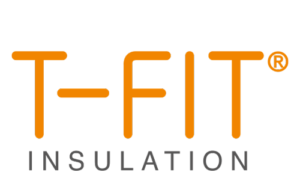The Actions
What Did We Do?
Stage 1:
We commenced this client’s SEO campaign with a core foundational strategy which included:
Technical SEO & Tracking
- Tracking set up and auditing to measure the effectiveness of activity and establish a benchmark (conversions/goals in Universal Google Analytics, Google Analytics 4, Google Tag Manager set-up, Search Console etc.)
- Technical SEO Audit and fixes: We approached technical SEO first to start with a good website foundation to build content upon. Our technical audits are highly comprehensive, therefore we have summarised the immediate changes below that were recommended to the client following our audit and report
-
- The site had a .xml sitemap but not an HTML Sitemap. We advised they create one to help users find content should the site navigation not be sufficient, and to help build more internal links throughout the site
- We found that hreflang language tags were set to en-US and advised that they should be set to en-GB to target the UK market rather than the USA
- Being a mortgage broker, Google scrutinises our client’s site in more detail than others. We recommended adding schema markup to include their business address in order to follow Google’s best practices for YMYL (your money, your life) sites
- We performed a full backlink audit to establish the nature of external links pointing to our client’s site, highlighting anything toxic or spammy, and identifying other sites that were providing worthwhile links and the type of content they were linking to. The site owner had previously disavowed a lot of harmful links which made this process quick and confirmed the site was not at risk of being considered spam by association
- We checked all internal links to make sure they were not running through redirects or not using HTTPS and fixed issues where they were found
Page Experience Report and fixes Google places great importance on the speed and stability of websites which is why we looked at this at the very beginning of the campaign, again to create a good foundation for upcoming content changes. Focus areas included:
- Core Web Vitals
- Mobile Usability
- Security Issues
- HTTPS
Initial keyword research to understand what users are searching for online and to identify keywords that are relevant to the business. We evaluated these keywords and built a scoring system for them based on the user’s intent (I), the relevance of the keyword to the business (R), and the overall search trend of the keyword (T) i.e. was the search volume increasing or declining over time?
This IRT score gave us a greater understanding of the keywords we should target and helped form our content optimisation strategy, focussing on the keywords with the most impact first.
Initial optimisation to improve the rankings of existing content, including core elements such as:
- <title> tags
- Meta descriptions
- On page content optimisation, including
- H1 Tags
- Image alts
- On-page copy
- Internal linking
Stage 2:
We then commenced the more in-depth SEO elements, looking at internal cannibalisation and developing a keyword gap plan:
Keyword Cannibalisation audit – checking where other pages on the site may be interfering with, or competing for, rankings:
- Keyword gap analysis (to fully understand how the optimisation we had implemented was performing, and where further improvements could be made). To do this we benchmarked all target keywords on Google and noted the rank and page that was shown for our client. This identified where the incorrect page was ranking for our target keyword, opportunities where pages were ranking around position 15 or better that could be tweaked to steal a top 5 spot, and also where pages were ranking for the right target keyword but not very well…position 20+
- Target keyword review: Again, we reviewed and audited each keyword to investigate the nature of the search engine results pages in order to see what types of content were ranking, to better understand what Google believes the intent of the user to be
- Are the target keywords relevant? Do they have good search volumes? What is the intent of the user?
- Keyword Gap Plan
Using Google Search Console, determine where other pages are ranking for target terms of other pages and create a plan including re-optimisation of some pages and internal linking changes to use correct anchor text and point signals to correct target pages. Identifying:
- Pages that are not ranking for their keywords
- Pages that are close to ranking on page 1 of the SERPs
- Pages that are ranking correctly but not very well
- Implementation
- Revised titles and descriptions
- Re-optimisation of elements of page content
- Implementation
We saw immediate results following this process, visualised below by data from Google Analytics 4 for 2022:
Stage 3:
We then focussed on elevating existing content to show experience, expertise, authority, and trust (Google calls this E-E-A-T)
- E-E-A-T strategy
- We audited existing content to evaluate where:
- Content was older than 24 months
- Pages had less than 200 words
- Pages had a large percentage of duplicate content shared with other internal pages
- Content older than 24 months was checked for validity and correctness then updated where necessary or removed altogether if no longer relevant and little traffic was landing on these pages. The benefit of this task is that content is then considered up-to-date and fresh, rather than commenting on outdated issues or referring to mortgage products that are no longer offered by lenders
- Pages with less than 200 words were reviewed to establish if they were necessary pages on the site (such as forms for customers to fill in, or a page for uploading supporting material for mortgage applicants). If they did not fall in this category, they were either improved (more written content) or removed altogether
- There were some pages highlighted as having high percentage of duplicate content, so we amended these where necessary to make sure pages were unique across the site
- We audited existing content to evaluate where:
- Trustpilot audit
- This element of the campaign also focussed on external signals such as Trustpilot to help convey trust in the brand. We audited the mortgage broker’s profile to ensure they were using all of the elements they paid for and that the information and imagery contained within the profile were up to date and on brand
There are more relevant elements required to complete in order to build experience, expertise, authority, and trust. Those are scheduled to be actioned following a further range of technical checks, following the high volumes of recent content changes and updates on the site.
These scheduled optimisation and E-E-A-T actions include ‘About us’/authorship implementation, sitewide spelling and grammar check, updated blog template sitewide to include authorship from team member bio pages, Social Media profile audits, Google Business Listing audits, Competitor research and creation of an annual Content plan (for fresh content on site and socials).
Despite E-E-A-T being a hot topic, we often revert back to basics to ensure that fundamental SEO best practice is not ignored.
Stage 4:
We then refocused attention back to technical SEO checks and opportunities, including:
- Technical clean up
- Technical clean up to cover pages that had been removed or changed, including internal linking updates to mitigate 404 errors and internal 301 redirects
- Site structure review
- The initial optimisation and cannibalisation process of the site had greatly increased rankings and traffic, however, some product pages were not performing as well as others, and some new product pages that had been published were not being indexed. To encourage crawling and indexing of important new pages, we decided to move all blog content into a separate folder to help search engines distinguish between content that was important and being updated regularly (mortgage product pages), and content that is unlikely to change and therefore needs less regular crawling. As part of this process, we decided to:
- Move all blog content into a dedicated /blog/ folder
- Move the application process (which included pages with thin content) into a dedicated /apply/ folder
- The initial optimisation and cannibalisation process of the site had greatly increased rankings and traffic, however, some product pages were not performing as well as others, and some new product pages that had been published were not being indexed. To encourage crawling and indexing of important new pages, we decided to move all blog content into a separate folder to help search engines distinguish between content that was important and being updated regularly (mortgage product pages), and content that is unlikely to change and therefore needs less regular crawling. As part of this process, we decided to:
This single change created such a profound improvement on the site (despite facing a few technical challenges) that we saw an immediate impact.
Previously unindexed pages became indexed, and previous mortgage product pages that weren’t performing as well began to accelerate their performance for keywords and subsequently acquired more traffic.

The Results
- Organic search sessions increased by 130% (from 5,196 sessions in month one to 12,002 in the month prior to creating this case study)
- Conversions increased by 1,689% (from 10 conversions in month one to 179 in the month prior to creating this case study)
- Conversion rate improved by 381% (from 0.16% in month one to 0.77% in the month prior to creating this case study)
The positive impact that the Stage 4 activity outlined above had on top-level product pages is illustrated in the graph below (which includes only Organic Landing Page Sessions for these target pages):
The impact this 2-year campaign has had so far on organic traffic alone is illustrated below.
The graph shows total Organic sessions only from December 2021 to December 2023.
The mortgage market is highly competitive and these results are based on organic performance only, we do not run PPC campaigns for this client as they now rank (mostly) in position 2 or 3 right below the Mortgage Lender themselves. In some instances they are now outranking the lender in position 1.
The screenshots below show performance for two high intent, top performing keywords over the last 16 months. Over this time, the ranking for these two keywords has significantly improved and now show little sign of being contested. We have removed the specific keywords from the screenshot to protect our client.
(Keyword 1 over last 16 months)
- CTR of 11.1%
- 3.95k clicks
- Current performance (April 2024): Average position 1.1, CTR: 16.9%
(Keyword 2 over last 16 months)
- CTR of 10.2%
- 2k clicks
- Current performance (April 2024): Average position 1, CTR: 16%
If you’re struggling to achieve the same significant SEO improvements with your current digital or SEO agency in a highly competitive market, then get in contact with us and find out how we can achieve the same sort of ROI and impact for you.












